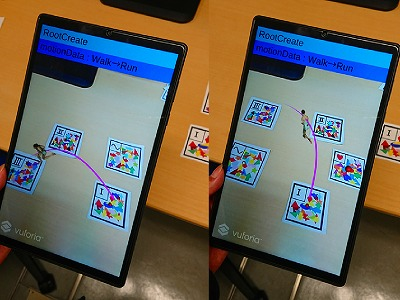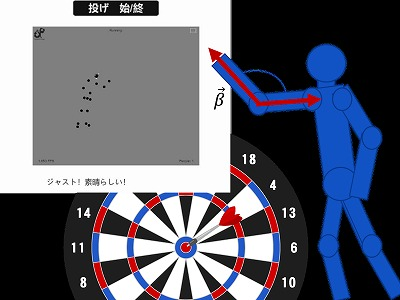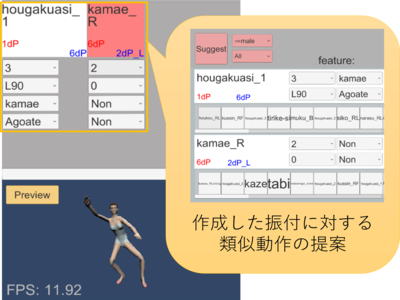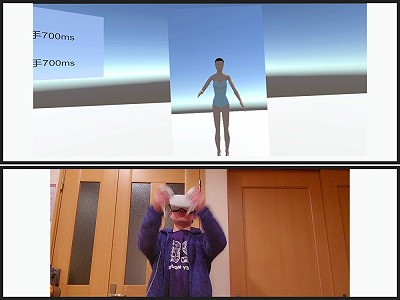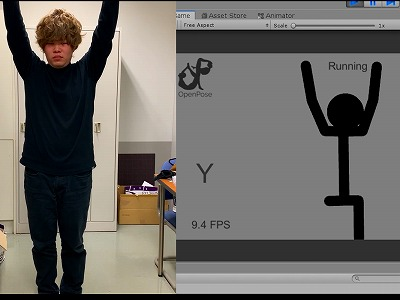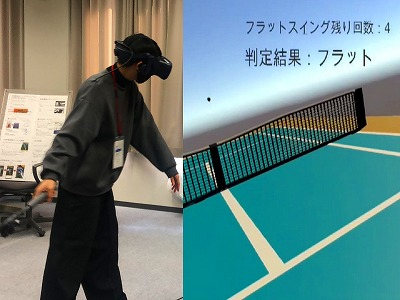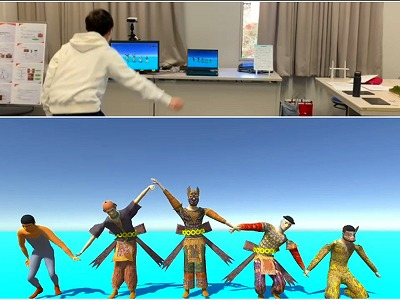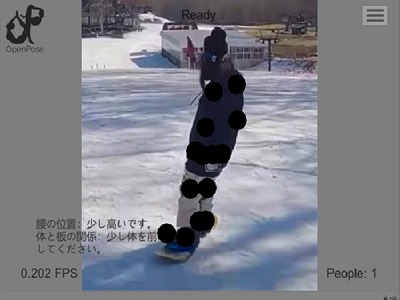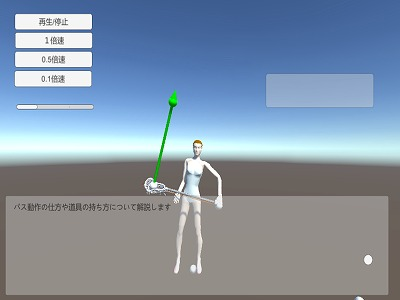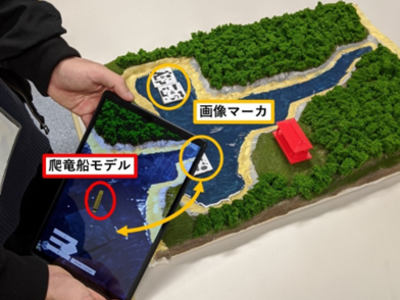| Motion archive and description system for reproducing Ryukyu dance performance |
The purpose of this research is to reproduce traditional performance arts and festival performances using CG animation. In this research, I propose a description method to facilitate the use of motion data and the creation of data for content creation, and a motion archive was constructed for Ryukyu dance. This work introduces data processing to handle the movements necessary to describe Japanese dance animation in a generic way, the structure of the human body for dancing with props, and the structure of CG models of traditional Japanese costumes. The description method was used in a choreography creation application and a festival exhibition system. The hierarchical structure of the CG model was described in order to reproduce a performance in which multiple performers dance while riding on special vehicles akin to parade floats, which is often seen in festivals. To confirm the usefulness of the motion archive, a choreography-creation application was developed to recreate the choreography of Ryukyu dance by combining basic movements. In order to reproduce the characteristic hand motion of Ryukyu dance, the arm and finger movements could be replaced by the appropriate human body movements. In addition, to reproduce the motion of dancing with props, finger motions were replaced by the human finger motion made while holding a prop. In order to verify the extent to which classical dance could be reproduced by creating choreographies with the constructed motion archive and the proposed application, I reproduced the choreographies for the female and male dances appearing in different forms of Ryukyu dance. As a result, the choreographies for female dance were reproduced at an 81% correct rate, while those for male dance were correctly reproduced at 58%. A festival exhibition system was developed to reproduce past festivals in which Ryukyu dances were performed, using motion data and CG, and thus it was possible to restore a performance of "Ryusyu-no-Gi" (dragon boat race), a festival performance historically staged in Okinawa. Since the system was designed to display a festival in a museum, CG is superimposed on a diorama of a pond so that the festival can be faithfully restored and appreciated. An evaluation experiment was conducted to verify whether the application is effective in supporting exhibitions of festivals. This capability was in fact verified because the application could successfully provide an understanding of Ryusyu-no-Gi.
